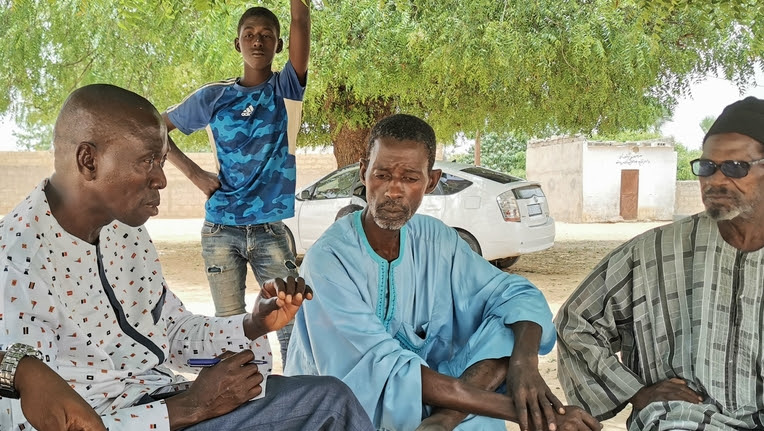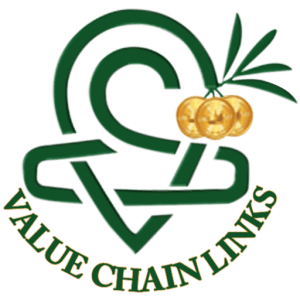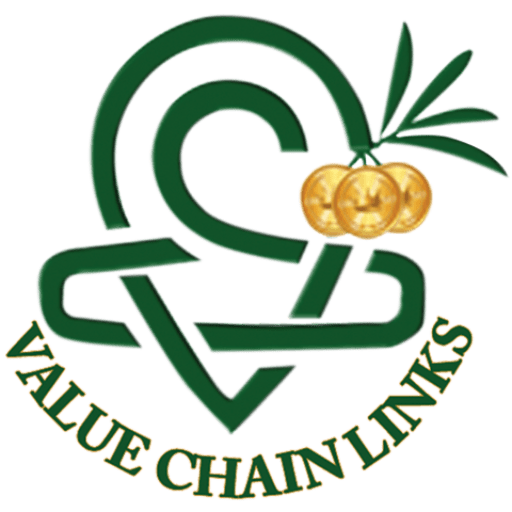BE THE LEADER YOUR COMMUNITY NEEDS

Breakout news note:
You can learn about the purpose of my trip to Australia from the national TV program 7 News and the official Media Release by David Basham, Minister of Primary Industry of South Australia.
WHAT ARE YOUR SUCCESS KEY CRITERIA?
I have always seen an advantage in the fact that I am a farmer at my roots, which facilitates my understanding of the farmer’s perspective. Yet, to improve the livelihood of smallholders, I need to deepen my knowledge further.
From that perspective, I see great value in your comments on my articles, regardless if you agree or disagree with the content.
After all, there are no “right” or “wrong” answers when you measure your success based on the extent to which you have been able to increase farmers’ income.
This article is dedicated to those tired of waiting for someone else to change their lives and are now ready to lead their community and country toward a better future.
To this end, I use parts of emails I received following last week’s article where I suggested focusing on the crop’s value per hectare instead of focus on the type of crop per se. With this, I raised the question of whether we should encourage farmers to keep growing staple crops.
COMMON PROBLEMS
Is staple crop a good business for smallholders? Well, Ms. Elinor Chemonges, wish to improve the livelihood of farmers, pointed out in her comment to me that regardless of the crop, there are three common problems smallholders are facing:
“The lack of direct access to the market by the farmers”,
“The failure to add value to the crops at the farm”, and
“The post-harvest losses… significantly reduce the farmers’ incomes”.
If all crops face the same problems, one may conclude that growing staple crops may be a wise business decision.
Well, what should we do?
Should we keep doing what we did until now, or should we change?
Indeed, the problems Ms. Chemonges pointed above are unrelated to the crop.
So, suppose the cost of solving these three problems is the same regardless of the type of crop we grow and its value per hectare. In that case, I wonder if we should focus on growing crops with a potential income of 500$ per hectare that will keep farmers in poverty. Or maybe we should grow something with a potential income of 5,000$ per hectare that potentially can lift farmers from poverty to prosperity?
I understand that it takes time and effort to understand and acknowledge that what we do today will not provide us the kind of future we wish for ourselves and our children. I also know that it takes time to internalize that a profound change is needed.
When we come to suggest ways for a better livelihood for smallholders, we should make a special effort to free our minds from the “old” mindset that brought us to the current crisis.
LEARNING FROM OTHERS
Unlike Mrs. Chemonges, Mr. Godfrey Omony is very clear in his approach that today’s state is unacceptable and requires change, even if the essence of the change is not yet clear.
In his email to me (below), Mr. Omony shared his experience and insights from his training trip to the USA.
When you read his comment, note the importance Mr. Omony gives to farmers’ “state of mind” and how seeing and experiencing a positive “Role Model” impact his worldview.
Ask yourself, do we have (enough) “successful Role Models” in emerging economies?
Mr. Omony statement:
“I stayed on a few farms in Michigan (USA) on an experiential training program.
My take-home was, these farms were run like factories. They had supporting infrastructure and services, subsidized finance, technology, but what awed me was their mindset in all this.”
Like Ms. Chemonges’s comment, Mr. Omony is not at all focused on technology as the Key Success Factor (KSF). Note that Ms. Chemonges doesn’t mention technology, and Ms. Omony mentions it as the last item on his list!
Instead, Mr. Omony noticed something that farmers in the developed countries perfected years ago and now take for granted; the need for “supporting infrastructure and services, subsidized finance, technology”. In practice, this is a user-friendly PACKAGE, creating a supportive environment to enable and encourage business success.
Mr. Omony wrote: “The hurdle is what you said in one of your videos, the need for a package and the package has to be contributed by the various stakeholders including farmers, leaders, etc.”
Conclusions: can anyone honestly say that more drones, computers, tractors, sprayers, pesticides, satellite communication are the most needed to advance smallholders in the emerging economies?
Sure, these technological innovations can improve the profitability of advanced farmers, those that years before established the fundamental layers of a successful agro-industry.
However, even if they get free access to those technologies for smallholders in emerging economies, it may be more of an obstacle (e.g., complexity, the dependence of specific knowledge, high maintenance costs, etc.) than a springboard to economic freedom and success.
The “advanced tools” smallholders need to belong to a different category: ORGANIZATION and MODELS.
THE ART OF ASKING QUESTIONS
From my own experience, I learned that my most outstanding achievements came when I questioned past paths of thinking and doing, which led me to ask difficult but “right” questions.
When the reality I see doesn’t match the theory or what “the experts” are saying, I start asking questions, and so should you.
Mr. Omony ends his email with questions, which shows that he is very open to change, the kind of change that will bring a better tomorrow.
Mr. Omony wrote: “As an agronomist, how would you advise that I approach this situation of causing or stirring up mindset change? I must admit that at farm level irrespective of level and scale of farmers, understanding that the farm as a business concept is appreciated, but not really acted on.”
It is leaders’ duty to create a clear vision and change the “mindset”.
The part of “professionals” is to advise on the path of reaching the vision and goals. By the way, if you are a leader, don’t expect “the professionals” to supply you with the “right approach advice”, as often they are clueless about it themselves.
Mr. Omony: “Yet despite these challenges, change must happen, and how to lead to this change is one reason I follow you and other supporters to know what I can do to champion this change in my community.”
There are three steps on the path to change;
1) Recognizing that there is a problem that requires change.
2) Willingness and even desire to see the change happen, and
3) Joining the journey of change with someone you trust and believe can lead and bring you there.
Mr. Omony is not alone; many others already went through the three steps of change and now ask, “What next?”, or in Mr. Omony’s words, “What is my role as an agronomist working with farmers in stirring this change or causing the leadership to support this change?”
I enjoyed reading Mr. Omony’s email because he acknowledges that HE IS THE LEADER in his community and needs to be supported by the regional/national leadership.
My father never saw himself as a “leader”. But, it did not stop him from leading a change from agriculture to agro-industry that led to a perceptual shift and an income increase of hundreds of percent per hectare.
You don’t need to be Nelson Mandela to lead your community, BUT your community can’t do without a local leadership.
Not every farmer is a leader, and there is no such need. However, there is a dire need for local supporting leadership. Remember that a national leader is not a substitute for the local leader. I encourage you to become the leader you wish to see.
A PLATFORM FOR CHANGE
At this stage, we already understand that the innovation required for smallholders in emerging economies is not a technological one. Instead, the change will come from innovative business models and protocols, answering Ms. Chemonge’s concerns and surely including technologies.
For far too many years, however, the need for proper Business Models for the agro-sector of emerging economies received little attention, if any.
Hence, today, we are left with old and outdated business models, which generally were built to secure food for the family but never meant to provide farmers with high added value for their labor. That is in contrast to business models in developed countries, which revolve around the (income) VALUE PER HECTARE.
In light of this, it is no wonder that Mr. Omony ends his email with a question, “What platform can I take advantage of to get this message to the leaders or cause this change in our farmers?”
My take from the above question is that Mr. Omony is asking to reach “the leaders,” hoping they would provide him with the innovative business model his farmers need.
Here Mr. Omoly is expected to be disappointed, as at this time, the national leaders do not have an innovative business model to help him and his farmers to improve their business results.
At best, the national leaders will be able to provide him with some budget. But, in the absence of a suitable business model, the budget will be wasted, as has happened with previous projects.
So what should Mr. Omoly do next?
If he approaches them with a proposal that includes a clear path for change, Mr. Omoly will do well for himself, his community, and the leaders.
Such a proposal should be characterized by its business model, which already includes essential required elements for change, including Protocols, Tools and Technologies, Know-how, and Support.
In the terminology introduced by Biofeed’s Green Valley concept, practically all you need is The Package (more reading for those who want to go even deeper).

| Hence, when you reach the leaders, present “The Package” concept and ask them to support it. Then it will be easier for you to lead the practical change.Green Valley provides a Complete Package, which part of it is to explain to the decision-makers the importance of a Package and its elements.What you can to present and ask the leaders to support you with a budget that will enable the farmers to propose the leaders The Package.Mr. Omoly can further suggest that the leaders participate in the life-changing event, The Africa Organization of Technology in Agriculture Conference and Expo (AOTA), which is dedicated to presenting and discussing innovative business models to increase smallholders’ income rapidly. |
| TAKEAWAYS» THE CURRENT STATE of low income per hectare is responsible for poverty and is unacceptable.» TO CHANGE, you need to accept that (1) you have a problem, (2) you have and want to solve it, and for this, (3) you are ready to start a journey with someone you trust.» IT IS A RISK to change, as it is not to change.» BE PROACTIVE in the process of change and lead your community.» A FUNDAMENTAL CHANGE will be the result of implementing A PACKAGE.» A PACKAGE must contain a suitable business model and focus on “income per hectare”.» GREEN VALLEY AND the AOTA conference are focused on innovative business models. |
| Please, if you found value in this article, it would mean a lot to me if you sent me a comment and shared it with your friends. |

